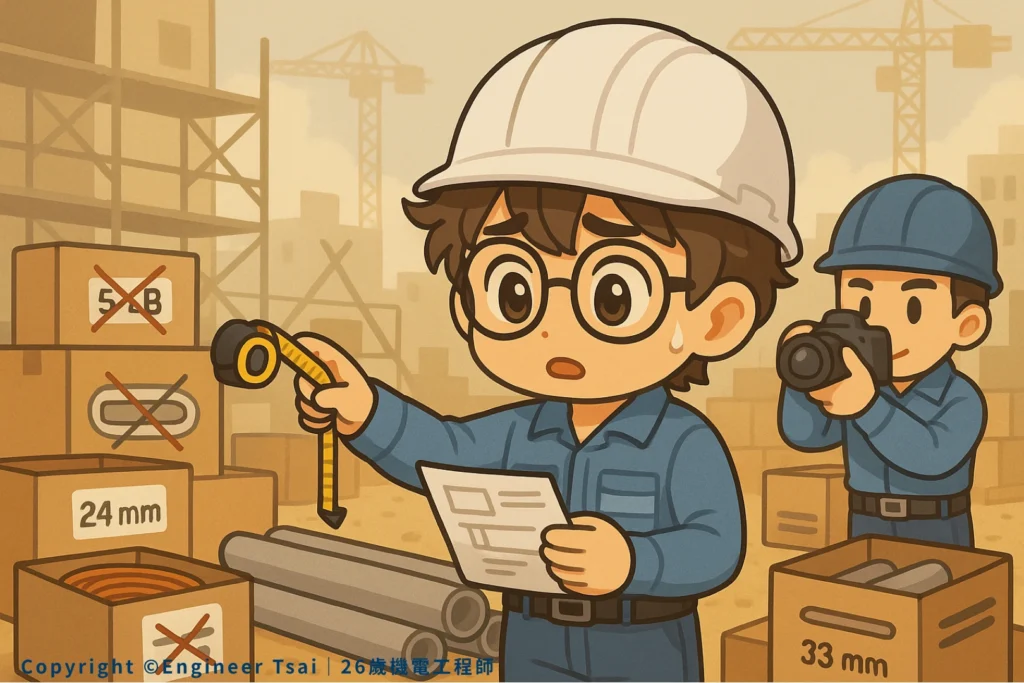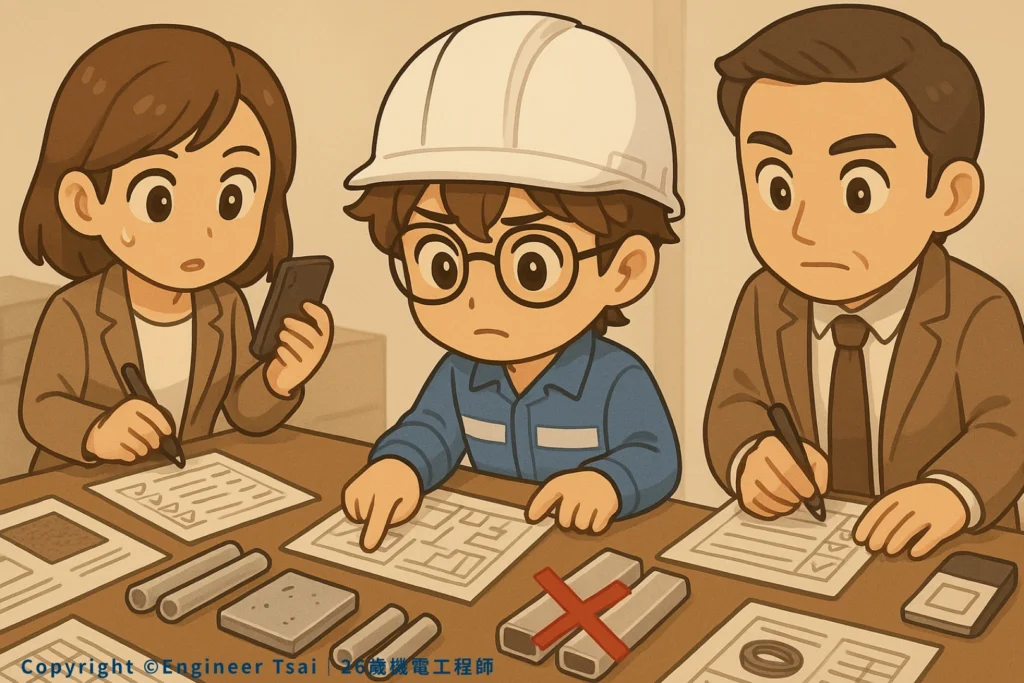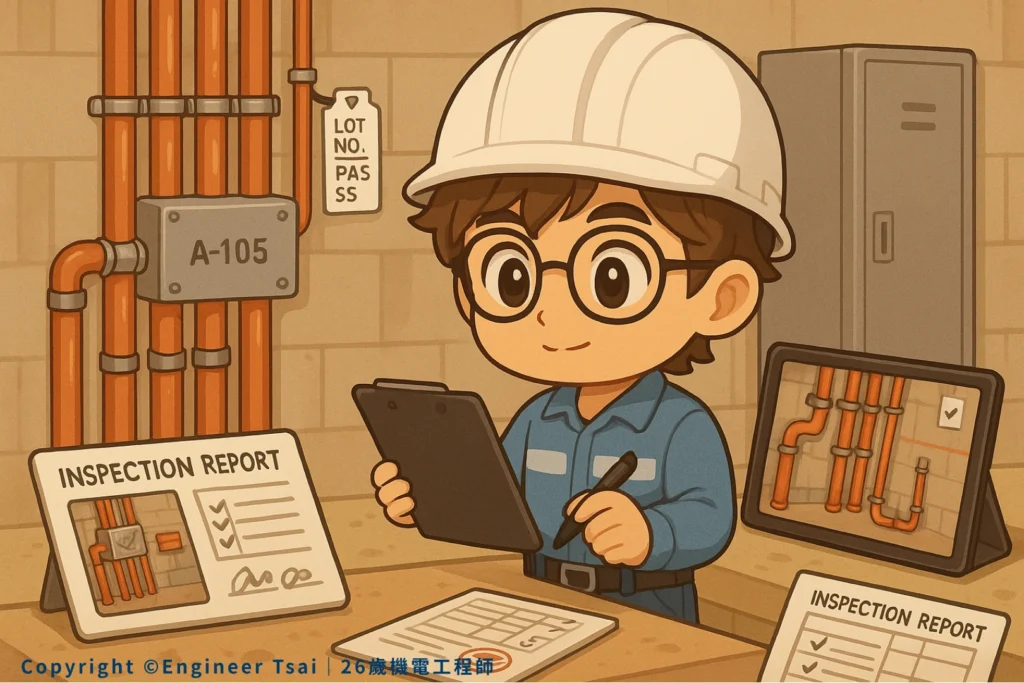Ever been on a Material Handling Mistakes, like when you been on a jobsite when the materials finally show up—everyone’s tearing open boxes, counting parts, and then…you realize the sizes, quantities, or even the brands don’t match the specs?
Or worse, half the stuff isn’t there, and now your crew is stuck, scrambling for a Plan B. Deadlines, safety, and quality? Suddenly it all feels like a gamble.
Let’s be real: material management and quality inspection aren’t just some checklist for the warehouse guy or a project manager—they’re a daily survival skill for every engineer, foreman, and field hand on site.
Material Management: Where Projects Go Off the Rails
1. Specs Don’t Match, Drawings Don’t Help
How many times have you heard, “Just order by the plans, you’ll be fine!” Yeah, right.
The number one way to step on a landmine? The spec on the drawings doesn’t match what suppliers can actually deliver.
Sometimes the part number is off by one digit, but the physical size is way different. If you don’t double-check before install, you might end up ripping out new work and blowing the budget and the schedule.
Pro Tip:
Before you order, get everyone in the loop, supplier, designer, field supervisor—and compare specs, dimensions, brands, and certifications.
On delivery day, bring the drawings, purchase orders, and spec sheets, and check everything as it comes off the truck. Ten extra minutes here can save you days of rework later.

2. Late Materials? Say Goodbye to Your Schedule
Ever hear, “We’ve been waiting on that shipment forever”? It’s not just a joke.
On US jobsites, supply chain hiccups, customs, or specialty parts often mean you’re left waiting, and your whole crew is burning daylight.
Real-World Advice:
Plan material deliveries way in advance, especially imports or custom orders. Factor in manufacturing lead times, shipping, and any possible border delays. Stay tight with your suppliers and warehouse crew so you can track issues early.
Always have a backup plan, don’t wait until the jobsite is out of stuff to start worrying.
3. Don’t Skip Receiving or Labeling—Ever
First thing when materials arrive? Don’t just drag them to the install area.
Go box by box, piece by piece. Suppliers sometimes mix shipments, slap on the wrong label, or things get dinged up in transit. If you skip this, you own the headache when it blows up later.
Field-Ready Checklist:
- Tape measure, calipers, camera, log dimensions, conditions, and every spec.
- If anything’s off, tag it and snap a pic, then get your supplier to sign off on the spot.
- Label every item with delivery date, lot number, and intended use so you can track it down fast if there’s a problem.

Quality Inspection: More Than a Rubber Stamp
1. “Looks Fine” Inspections Are Trouble
Some crews just breeze through quality checks, it’s one of Material Handling Mistakes, assuming if it “looks okay” it’s a pass. That’s a trap.
Hidden issues like wrong wire gauge, undersized pipe, or swapped components can cause huge safety and code risks.
What to Do:
Check every detail against the checklist. If something needs sampling, sample it. If it needs a pressure test, test it. Take your time, fixing mistakes later costs more than you think.
2. Detailed Records = No Blame Game
Any time you find an issue or need to delay or fix something, write it down, take a photo, and get a sign-off.
Most disputes come down to missing documentation, if you have proof, you’ll never have to argue your case.
How to Build Your Paper Trail:
- Use an inspection checklist—mark every item, jot down notes.
- Photograph every step, file by area or phase.
- Get signatures from vendors, GC, or the owner on any exceptions or rejections.
3. Don’t Rely on “Trust Me”—Back It Up
You’ll hear, “Don’t worry, boss, I got this!” a hundred times.
But on a real jobsite, promises don’t mean much unless they come with data, records, and a second pair of eyes. A solid inspection routine is the safety net that protects everyone.
Field Wisdom
“Nail down your material checks, and every day on site gets easier.”
“Inspections aren’t there to slow you down, they’re why everyone gets home safe.”

Quick Reference: Field-Proven Hacks
- Snap photos and label deliveries as soon as they hit the ground, reject anything off-spec, right away.
- Make sure field, design, and supplier reps are present for inspections—deal with problems face to face.
- Don’t know something? Ask. If anything’s odd, write it down.
- Backup every record—don’t rely on memory if something goes sideways.
Take Action: Make Every Day on Site Safer and Smoother
What’s your worst material or inspection nightmare about Material Handling Mistakes?
Ever had to fix a mess that could’ve been avoided with better checks?
Share your story below or pass this checklist to your crew, real experience is how we all get better.
Like practical jobsite advice? Follow me for more field-tested tips.
Next up, we’re breaking down how AI and IoT are changing the inspection game, don’t miss it!
📌 Recommended Reads:
🔹Current & Voltage for DIY Enthusiasts : Unlock the Basics
Most inspection mistakes start with confusion over the basics. Master this and dodge those common electrical headaches.
🔹Transformer Voltage Step-Up & Step-Down: What You Need To Know
Power quality issues? Choosing the right transformer is the key—here’s how to do it right.
🔹Jobsite Safety Essentials: 5 Rules Every Engineer Needs to Know (Coming Soon)
Skills matter, but safety always comes first—this guide shows you how to keep your crew out of trouble.


